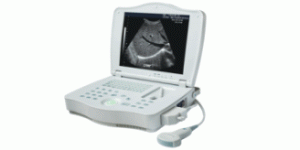Article
Ultrasound Not Inferior for Sizing Renal Masses
Author(s):
Ultrasound imaging is not inferior to computed tomography and magnetic resonance imaging for assessing renal mass size, researchers at the University of California, Irvine, and the University of Pennsylvania have found.

Ultrasound imaging is not inferior to computed tomography (CT) and magnetic resonance imaging (MRI) for assessing renal mass size, researchers at the University of California, Irvine, and the University of Pennsylvania have found.
“Every patient who underwent ultrasound imaging also underwent computed tomography (CT) or magnetic resonance imaging (MRI), or both, before treatment,” the authors write in the study’s abstract. “The size of the largest tumor identified per imaging modality was compared among the modalities using correlation and analysis of variance.”
The study included 116 patients, all of whom underwent ultrasound imaging prior to definitive therapy for a renal mass. In addition, 66 also underwent CT, 80 also underwent MRI, and 33 underwent all three imaging modalities.
The average pathologic tumor size for the whole cohort was 4.45 cm, and the researchers found that the renal mass size differences between CT and MRI in comparison with ultrasound were not significant (<3.5%).
“Compared with MRI and CT, ultrasound was also well correlated (P < .001 and P < .001). In patients who underwent all 3 imaging modalities, no difference was found in the average tumor size (P = .896),” the authors write.
The study’s findings may prove to be “useful in reducing the costs and levels of radiation exposure for the long-term follow-up of patients receiving active surveillance,” the authors concluded.





